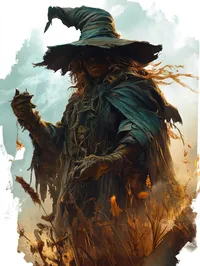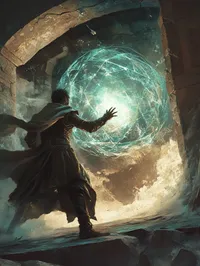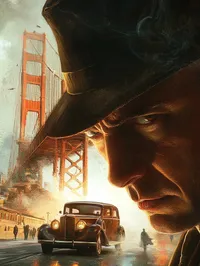
- Level:
- Novice
- Lessons:
- 6 Lessons
A compelling character arc
Learn how to create compelling character arcs that take your readers on an emotional journey using the like, care, and love framework.
- Reading Time
- approx. 3 min
Nobody likes a static character. A great way to create a compelling character arc is to take the character through three phases: like, care, and love. By going through these phases it allows the reader to become more invested in the character. Each phase takes approximately a third of the story.
In the initial “like” phase, the character’s strengths and flaws are established, giving the reader someone they want to follow despite all the imperfections.
The “care” phase puts the character through trials and adversity that test their resolve, making readers deeply empathize with them.
Finally, in the “love” phase, the character faces their darkest moments and makes pivotal, often self-sacrificing choices that solidify them as an admirable and fully-realized person.
Here’s a handy chart to visualize the framework:

Like, Care, Love Examples
Let’s take a look at some popular movies to see how their main characters progress through like, care, and love.

The Wizard of Oz (1939)
Dorothy is a kind and innocent teen who we immediately like for her wholesome charm and determination to keep her dog Toto safe while finding her way home. As she journeys down the yellow brick road facing a witch, flying monkeys, and an unsympathetic wizard, we care deeply about her quest and hope she succeeds. By the time Dorothy realizes there’s no place like home and returns to Kansas, leaving her friends behind, we love her for the brave hero she’s become.

Doctor Strange (2016)
We first like Dr. Stephen Strange for his brilliance as a neurosurgeon, even if his arrogance makes him an ass. As he loses the use of his hands and embarks on a journey of self-discovery, we care about his struggle to find purpose and heal himself through the mystic arts. When Strange makes the ultimate sacrifice to protect the world from Dormammu, facing an endless time loop of death, we love him for his courage and willingness to be the hero the world needs.

Blade Runner (1982)
We initially like Deckard for his world-weariness and skill as a Blade Runner hunting rogue Replicants. As he becomes entangled with Rachael and questions the ethics of his job, we care about his inner conflict and humanity. By the end, when Deckard honors Roy Batty’s brief life and goes on the run with Rachael, we love him for making the moral choice despite the risks.

The Nightmare Before Christmas (1993)
We like Jack for his passion as the Pumpkin King and his desire to find something more fulfilling. As he obsesses over Christmas and tries to recreate it in Halloween Town, we care about his ambition despite the chaos he causes. When Jack gets captured and realizes the error of his ways, ultimately saving the day, we love him for his redemption and appreciation for his true purpose.

Oppenheimer (2023)
We initially like J. Robert Oppenheimer for his scientific brilliance, then care about his moral struggles with creating the atomic bomb, and ultimately love him based on how he reckons with the consequences of his work.

The King’s Speech (2010)
We initially like Bertie for his humility, good-naturedness, and the empathy we feel for his debilitating stammer. As he works to overcome his speech impediment with Lionel Logue’s help, facing the daunting prospect of leading a nation, we deeply care about his struggle and root for his success. By the film’s climax when he delivers his first wartime speech as king, we love Bertie for his perseverance, courage in the face of adversity, and commitment to his role serving the people.

The Little Mermaid (1989)
We immediately like Ariel for her vibrant spirit, curiosity about the human world, and her loving bond with her friends like Flounder and Scuttle. As she makes the risky deal with Ursula to become human and pursues her dream of being with Prince Eric, we care deeply about her hopes and determination despite the challenges. When Ariel sacrifices her voice to Ursula but ultimately breaks the curse through her selflessness and the power of true love, we love her as a heroine who never lost sight of her dreams.

The Maltese Falcon (1941)
We like Sam Spade initially for his wisecracking tough guy persona and skillful work as a private detective. As he gets entangled in the hunt for the elusive falcon statuette and has to deal with the devious motives of others, we care about whether he can navigate the web of lies and deceit. When Spade ultimately chooses his moral code over protecting his treacherous client and lover Brigid, we love him for his integrity and commitment to justice despite his cynical exterior.
Conclusion
Like, care, and love form a powerful emotional arc you can take your reader on. With careful crafting, the payoff is huge. You’ll end up with characters that readers adore, ones they can’t stop thinking about long after the story ends. Look at the protagonist of your story; if you divide their timelines into thirds, do they follow an arc that builds a deeper emotional bond with the reader? If not, try nudging the character in the way they grow. Your readers will love you and your characters.
This lesson was taught by:
Corey Ostman
After spending three decades writing science fiction for machines, he now writes science fiction for humans. His brain is almost entirely in the future, so if you encounter him, you’re likely experiencing a form of temporal rift.